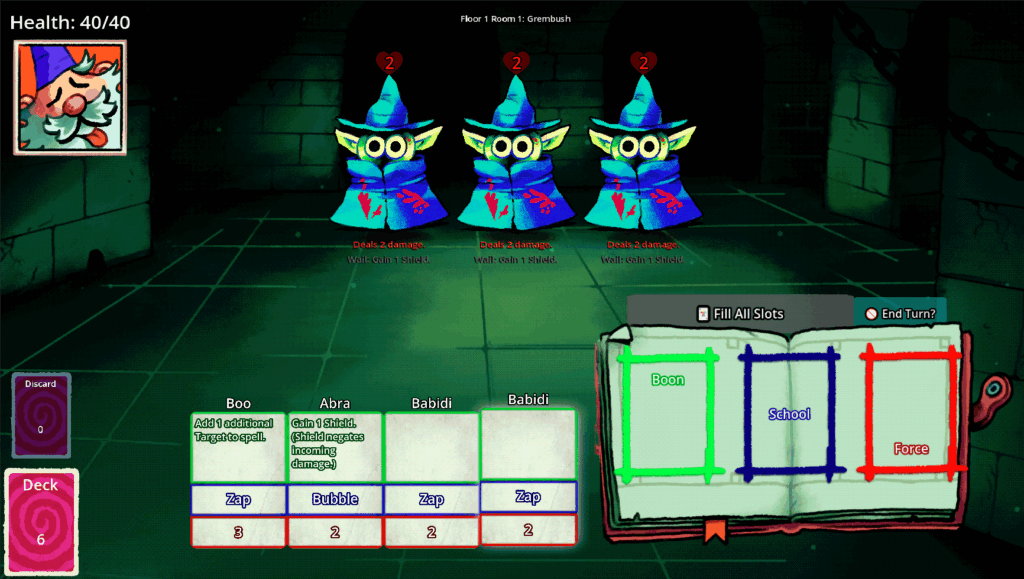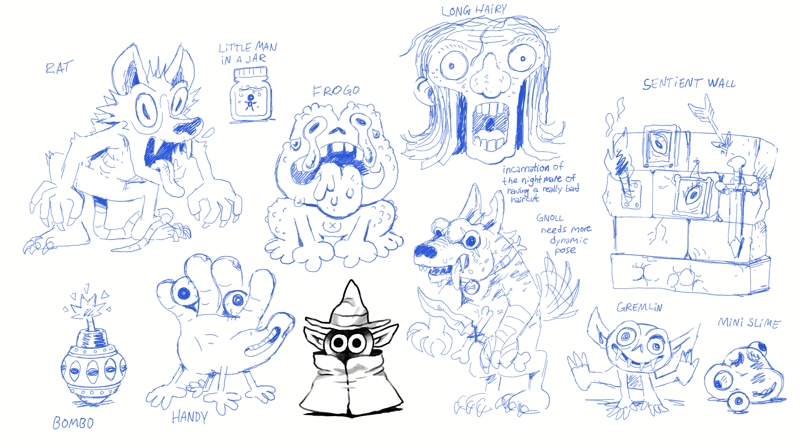Hey friends! As we start preproduction on our latest roguelike deckbuilder game, it’s becoming essential to answer the age old question: what makes a good game? In this issue, we’ll take a look at some common pitfalls to avoid in this particular genre.
How Am I Doing?
I’m decent! I don’t have a lot going on except for being excited about making games. Last friday Jonas and I had a big meeting to estimate a scope for our new official game project Bibidi Bibidi! It’s definitely ballooned a little beyond what our initial goal was, but we essentially decided that this game has enough potential to take an extra few months. The upside of that is that we have a longer, slower period to build a community of dedicated players.

What Am I Doing?
For the past week I’ve been mostly doing marketing research. I gathered a bunch of recent games in the roguelike deckbuilder genre and put them in a table with their release date and estimated revenue. Some of them are hugely succesful, some of them not so much. The great news, it seems like our target revenue is a pretty low bar to clear. Games that haven’t done so well, with a low amount of sales and a lot of negative reviews, still easily jumped the month 3 gross 60.000 mark we put for ourselves.
In addition to that, I’ve been rummaging through reviews of games that have not cleared that mark, to see if I could find any useful pitfalls to avoid. After a lot of painstaking copy/pasting, the answer seems to be yes! Most criticisms from hardcore players of the genre, both from positive or negative reviews, tend to fall under one of the following categories:
- Originality: It’s too similar to existing games in the genre/not enough innovation. Conversely, it lacks the expected features of the genre, such as branching paths, shops or special events.
- Replayability: There’s not enough content to be replayable. Unlocking content can also be too slow, and in some rare cases, too fast. People seem to expect at least 8+ hours of gameplay before epxeriencing everything the game has to offer.
- RNG: It relies on random numbers too much. If there are random elements that can mess up your run, it’s especially frustrating, since it’s out of your control as a player.
- Difficulty: Overall too easy, or unpredictable difficulty spikes. Card balancing specifically is often mentioned as the deciding factor here.
- UX: UI is too confusing or lacking tutorials. This goes especially for games that have novel or innovative mechanics.
- Pacing: If runs are too short, you can’t reap the rewards of investing in a cool build. If they’re too long, you lose some of that typical roguelike “try again” factor.

There are some other conclusions I drew from this analysis as well. Your game WILL get compared to Slay the Spire. Literally every game that came out in the past few months had reviews mentioning Slay the Spire, even though it’s been 6 years after it came out officially.
Also, the reviews with the most useful information tend to start along the lines of “I’m torn” or “I really want to like this, but…”. These are people who are emotionally invested in some part of the game, but have genuine gripes that prevents them from enjoying the game as they’d like to.
So, we know what to avoid when building a roguelike deckbuilder. Nothing too surprising there, but then, what makes a good deckbuilder? A lot of positive review on the most succesful games mention the exact opposite of the pitfalls I listed. Essentially, investing in those aspects nets you a game that is percieved as at least decent!
Why Am I Doing? (this)
Another thing I’ve been meaning to do is make a YouTube vlog. The last video I uploaded talks about the conception of Rumorweaver, a game I’ve since put on an indefinite hiatus. That was six months ago. Pretty much all of those videos are dedicated to announcing a new game. The deVlog series makes it clear that I have a bad case of shiny new object syndrome: a burst of energy and excitement to talk about my latest project, that gradually fizzles out until the next one.
It feels almost like a delayed death sentence for projects somehow. As long as I feel this way, I probably won’t touch a camera again, but I do feel like I owe some kind of update to whoever is waiting on that side of the internet. Besides, it will be good to get some extra eyeballs on the prototype.
We’ll see where the wind takes me.
